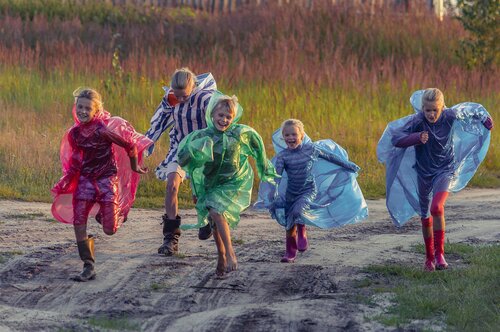

Colorado’s child welfare system is expensive to taxpayers and in many cases causes irreparable trauma to the young people who are shuffled from home to home and school to school. And yet, according to the dozen nonprofit, government and academic stakeholders who gathered at Morgridge Family Foundation (MFF), the problem is solvable. That’s because the number of youth in Colorado’s system—5,137 at this moment in time—is relatively small.
The group met to talk about a new report co-authored by John Farnam, managing director of MFF, and D.J. Summers, director of policy and research at the Common Sense Institute (CSI). Farnam’s passion for ensuring the success of all children stems from his own experience having been adopted by a large and loving family on a ranch in Montana. He tells his story in this podcast on Our American Stories.
According to the report—titled Untapped Potential: Economic Costs of Colorado’s Foster Youth—it costs Colorado $343,453 for every kid who ages out of foster care, never having been adopted or returned to their families. Over 10 years, the total cost is $660 million to $730 million, based on the average of 213 youth who emancipate every year.
Farnam said: “These are our children. They belong to all of us. We’re paying for them. We’re unfortunately paying for them on the back end of a failed experience in foster care. We can absolutely do better. We must.”
The data used for the report was collected from various sources in four categories -– early parenthood, homelessness, education attainment, and incarceration.
Elysia Clemens, PhD, deputy director and chief operating officer of the Colorado Evaluation and Action Lab at the University of Denver, believes Colorado is making great legislative strides. “We’re doing so much as a state, way more than many other states in terms of policies related to educational stability and transportation, opening the door to post-secondary education,” she said. “We need to hold ourselves accountable, collectively as a community, that every young person, wherever they are in their journey, has a developmentally appropriate person that sticks with them when their placement changes, when they move, and are hopefully reunified with their families. That’s the social capital piece. We also need to take care of the financial side, so they can fully participate in school and extracurricular activities.”
The report offered three recommendations that directly address Clemens’s observations: Educational Savings Accounts for students in the foster care system, cash incentives for foster parents who shepherd a student to high school graduation, and a statewide Virtual School District that follows each student more seamlessly across their movements across schools or districts.
In a new film, Rebecoming Me, to air in January on PBS12, former foster youth talk about the opportunities they missed, and the need, especially, for continuity.
“Feeling unheard and unseen was a common theme,” said director Rachel Farha. “There were plenty of caseworkers and judges, and lots of people around them. But they seldom felt there was someone who understood their entire journey through the complexities and isolation of the experience in the child welfare system.”